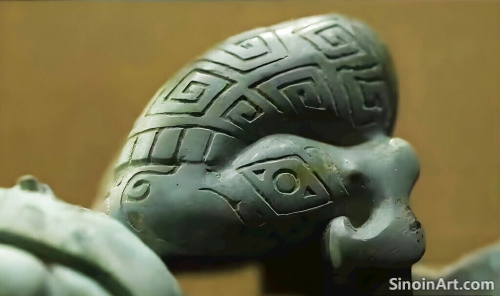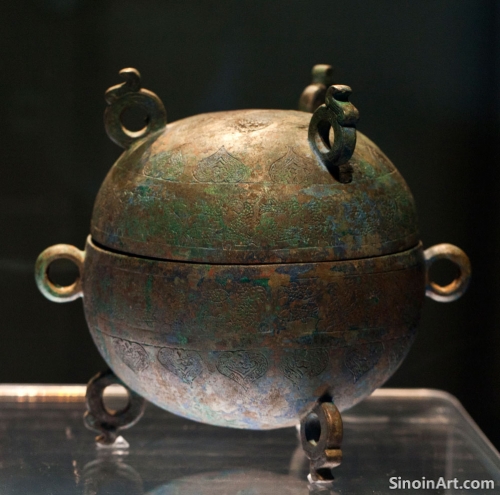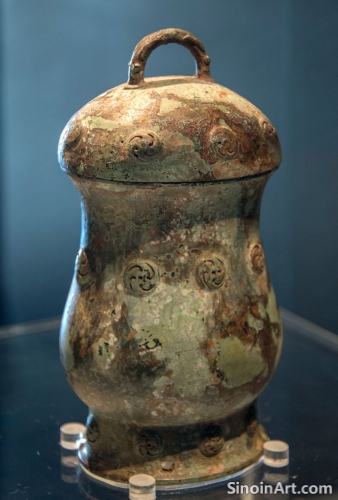Bronze Ware and the Representation of Authority: Imperial Symbols and Power
|
Bronze objects in ancient China were frequently used to visually express and reinforce the authority of the ruling class, ranging from emperors to nobles and court officials. These objects, which served both ritual and also daily life purposes, became powerful symbols of the social and political hierarchies of the time. The careful use of bronze objects helped to solidify the ruling structure of the era.  Bronze objects often displayed specific emblems and symbols associated with imperial authority, including dragons, phoenixes, and other mythical creatures, all carefully selected to underscore the divine power of the ruler. The use of these symbols helped to connect the earthly power structures with the power of the heavens.  Bronze weapons and chariots, often richly decorated and finely crafted, were also potent symbols of military might and the power of the state, demonstrating the strength and authority of the rulers. The use of these objects to communicate and convey power was a central component of the ancient Chinese understanding of the political order.  The precise craftsmanship and luxurious materials used in the production of bronze objects helped to convey the wealth, power, and artistic achievements of the ruling class, setting them apart from the rest of the population. The use of precious materials served to create a visual distinction between the rulers and the ruled. The production of these objects was an act of both artistic creation and also social and political messaging. The study of bronze ware and its association with power helps to highlight the importance of material culture in shaping social and political relationships, underscoring the interconnectedness of art, power, and the assertion of authority. The use of visual elements as a form of communication has always been a powerful element in human societies, and the use of bronze in ancient China is a perfect example of this. |
Tag : bronze power symbols, Chinese authority, imperial emblems, political power, social hierarchy
Related information
- Bronze Ware and the Development of Ancient Chinese Scientific Thought: Experimentation, Observation, and Knowledge
- A Guide to Further Study: Navigating the World of Chinese Bronze Ware Resources
- Bronze Ware and the Representation of Power in Ancient Chinese Royal Tombs: Scale, Detail, and Symbolism
- The Influence of Bronze Ware on Ancient Chinese Music Theory and Practice
- Bronze Ware and Ancient Chinese Notions of Heaven and Earth: A Cosmic Worldview
This article explores how bronze ware played a role in the development of ancient Chinese scientific thought, highlighting its use in experimentation, observation, the creation of scientific instruments, and the preservation of knowledge, underscoring the connection between technology and the scientific understanding of the world.
This article provides a guide to further study on Chinese bronze ware, highlighting academic journals, museum websites, online collections, and books, and providing a roadmap for continued exploration and research into this fascinating area of art and culture.
This article explores the use of bronze ware in ancient Chinese royal tombs, highlighting its role in conveying power and wealth, its use of scale and detail, its symbolic designs, and how these objects were intended to ensure the continued recognition of the deceased in the afterlife.
This article explores the influence of bronze ware on ancient Chinese music theory and practice, highlighting the role of bronze instruments like bells and chimes in shaping musical scales, performance styles, and the spiritual aspects of music.
This article explores how bronze ware reflected ancient Chinese concepts of the cosmos, highlighting the integration of celestial symbols, the use of balanced forms, and the interplay between human activities and the perceived order of the universe.